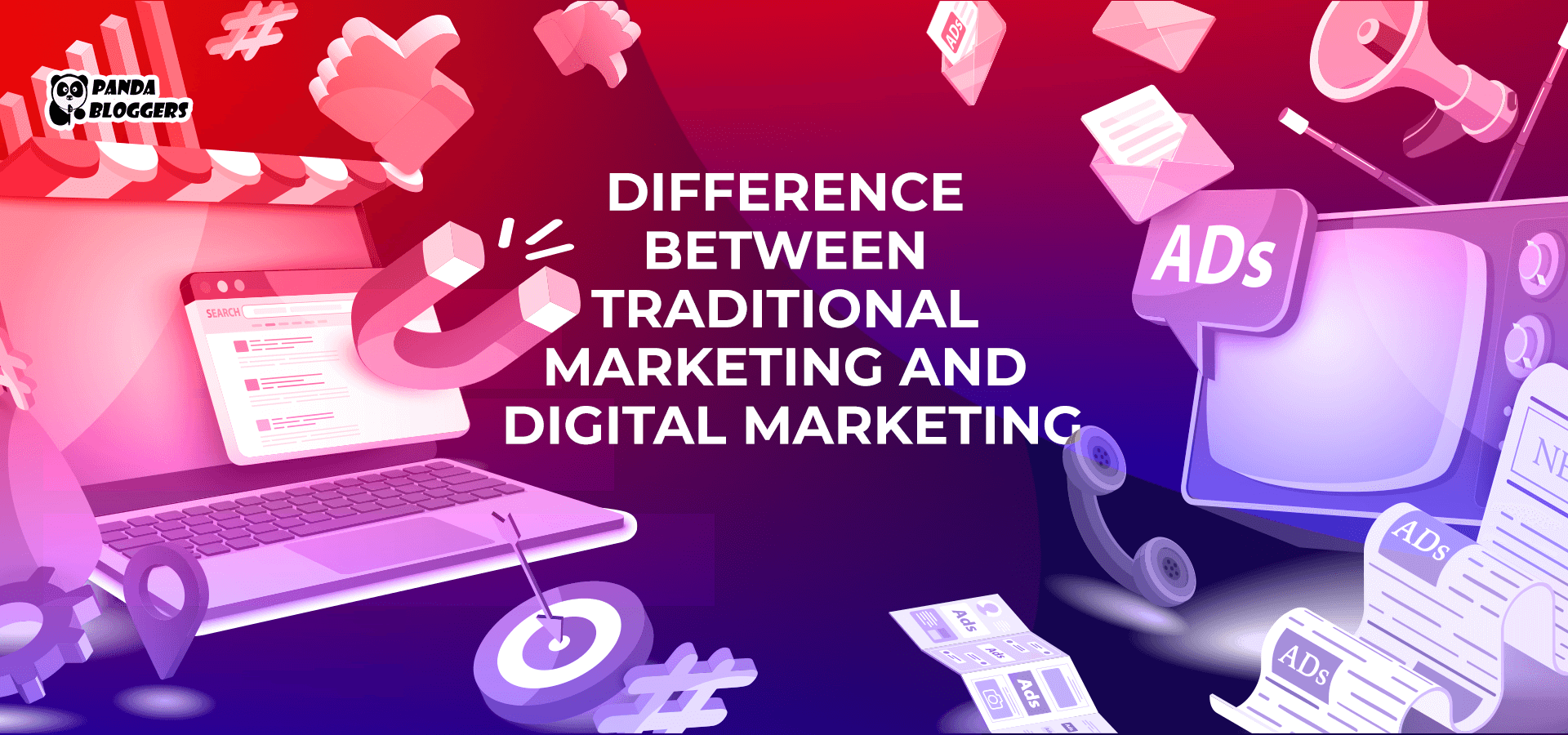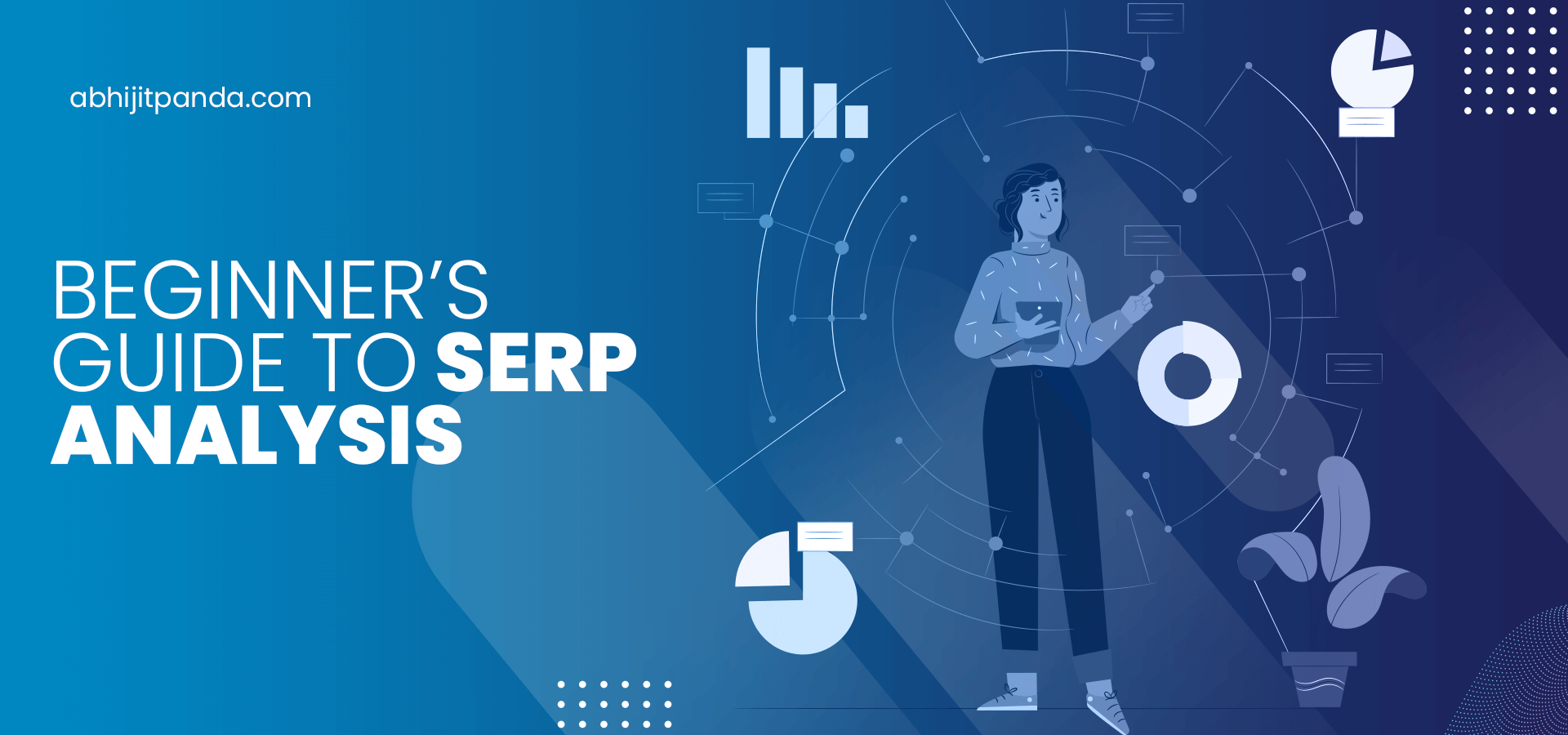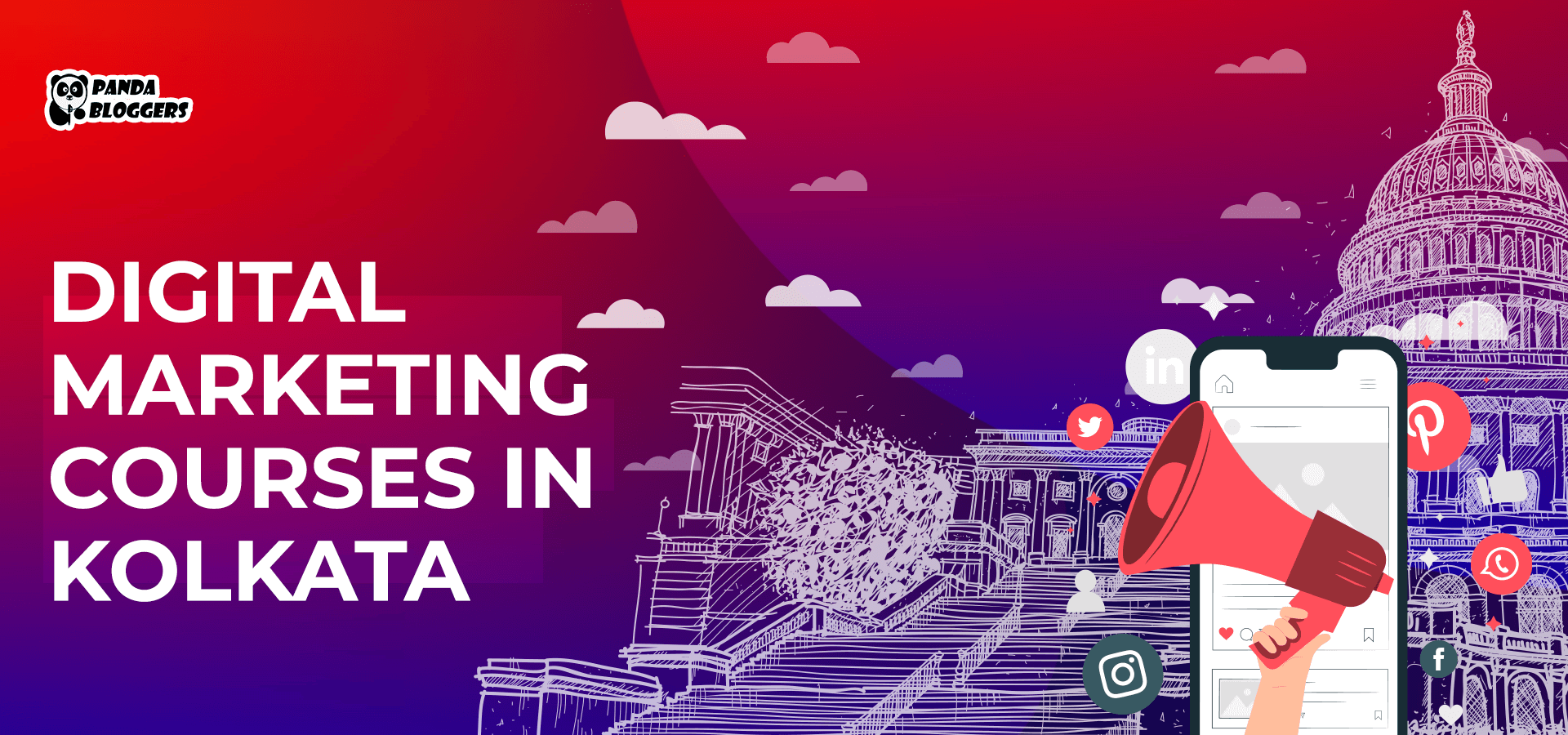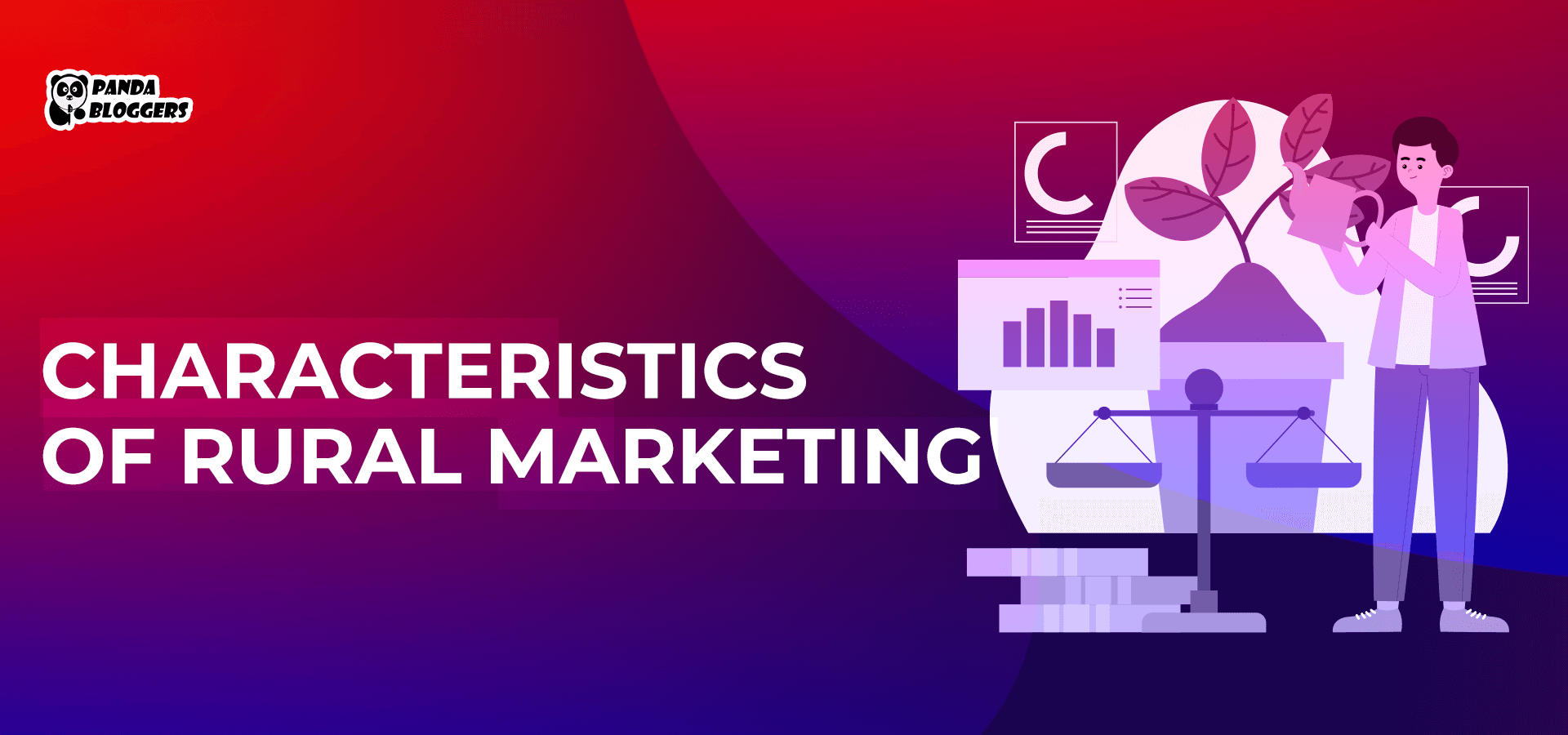 Difference between Traditional Marketing and Digital Marketing
Difference between Traditional Marketing and Digital Marketing
According to the American Marketing Association, “Marketing is the activity, set of institutions, and processes for creating, communicating, delivering, and exchanging offerings that have value for customers, clients, partners, and society at large.”
Enterprises create brand awareness and promote offerings using various marketing channels and strategies. The marketing strategies or approaches implemented by a company or startup can be broadly divided into two categories – traditional and digital.
As the name indicates, traditional marketing strategies make enterprises create brand awareness and promote brands using offline media. At the same time, digital marketing strategies make brands connect with existing and prospective customers using digital channels and technologies.
In the age of Industry 4.0, most companies and startups prefer digital marketing to traditional marketing. However, many conventional marketing strategies are still effective and useful in boosting customer acquisition and retention. Hence, decision-makers must keep in mind the difference between traditional marketing and digital marketing to make the perfect marketing mix.
Traditional Marketing
In the pre-Internet era, enterprises were acquiring and retaining customers using various marketing methods. Writers and bloggers refer to these non-digital marketing methods as traditional marketing or offline marketing in the digital age.
The common examples of traditional marketing tactics are direct mail, phone calls, print advertisements, networking events, billboards, TV ads, radio ads, and face-to-face meetings. Most of these marketing tactics connect brands with customers and prospects using offline media.
Many marketers believe that digital technologies have made these conventional marketing tactics obsolete. However, several market research studies have highlighted the effectiveness of specific traditional marketing tactics in generating high return on investment (ROI) despite growing digital penetration.
Digital Marketing
Digital marketing tactics focus on generating, nurturing, and converting leads using multiple digital marketing channels. In addition to curtailing marketing costs, they help companies build and sustain customer relationships across digital touchpoints.
An enterprise can create brand awareness and promote products using channels like websites, search engines, social media, emails, and paid ads. Organic digital marketing campaigns help businesses drive traffic to websites without escalating costs.
Likewise, an enterprise can increase brand visibility and website traffic in a short amount of time by running run various paid advertisement campaigns. The rapid growth of the worldwide digital marketing market depicts the popularity of digital marketing over traditional marketing.
Traditional Marketing vs. Digital Marketing: Key Differences
While promoting a product or service, modern enterprises prefer digital marketing channels to offline marketing materials. However, several studies suggest certain traditional marketing strategies still generate higher ROI in the digital age. Hence, decision-makers can make the perfect marketing mix only by keeping in mind the key differences between traditional marketing and digital marketing.
Outreach
Modern businesses use traditional marketing methods to reach out to customers and prospects living in a specific area. They have to run multiple campaigns to make more buyers aware of their products, services, brands, and offers. On the other hand, enterprises can target local and/or global customers while planning digital marketing campaigns. Many enterprises switch from traditional marketing to digital marketing to enhance customer outreach.
Customer Interactions
Businesses build and sustain customer relations by communicating and interacting with them across touchpoints. Digital marketing tactics boost customer relationship building by supporting instant and bidirectional interaction. However, traditional marketing methods do not create opportunities for brands to interact with customers instantly. The delayed interaction makes it challenging for brands to engage customers and establish customer relationships.
Trustworthiness
Customers trust traditional marketing methods like print ads and TV ads more than online ads. Also, traditional marketing tactics resonate with older customers. That is why; large companies still use traditional marketing tactics to boost brand-building initiatives. However, they increase the trustworthiness of digital marketing campaigns by delivering high-quality content through dependable channels. Also, leading brands communicate products or services by sharing honest and transparent brand messaging.
Customer Targeting
Traditional marketing tactics deliver the same message and display the same ads to customers without considering their demographic characteristics. Hence, it becomes challenging for enterprises to engage a specific category of buyers. Digital marketing tactics enable businesses to tailor content and messages according to customers’ demographic characteristics. While planning digital marketing campaigns, managers use buyer personas to segment and segregate customers based on demographic features.
Result Measurement
Decision-makers often find it challenging to quantify and measure the outcome of traditional marketing campaigns. But they can track and measure digital marketing campaign results accurately. Marketing analytics make it easier for managers to calculate ROI by collecting and analyzing campaign data automatically. Also, a manager can measure the performance and outcome of individual digital marketing campaigns using specific KPIs.
Campaign Finetuning
The static nature of non-digital marketing makes it difficult for marketers to abandon or refine a campaign. For instance, marketers cannot edit or replace billboard ads when they do not achieve desired results. But they can refine and remove digital marketing content/messaging without any hassle and delay. Hence, it becomes easier for them to increase ROI by stopping non-performing campaigns and boosting campaign performance based on real-time data.
Costs
The static nature of traditional marketing makes businesses incur both upfront and ongoing costs. Also, marketers find it challenging to curtail costs due to a lack of options to abandon or finetune individual campaigns. The flexible nature of digital marketing helps enterprises control costs in several ways. For instance, a business can curb marketing costs by repurposing existing content for multiple channels. Likewise, organic digital marketing tactics help them promote products or services without incurring additional costs.
Return on Investment (ROI)
Decision-makers use ROI as the primary criterion while selecting and comparing marketing tactics. The leaner and customizable nature of digital marketing tactics makes them more cost-efficient than traditional marketing methods. Marketing automation tools help enterprises curtail human resource costs by performing routine marketing tasks efficiently and automatically. Also, they increase the ROI of marketing by sharing actionable insights gained based on real-time data.
Conclusion
Most enterprises these days prefer digital marketing to traditional marketing to connect with and engage buyers without escalating upfront and ongoing costs. Digital marketing strategies further create opportunities for them to drive sales conversions by sending personalized messages and showing targeted advertisements.
However, several traditional marketing strategies are still effective in boosting customer acquisition and retention in the digital age. That is why; decision-makers must evaluate the effectiveness of individual traditional and digital marketing strategies. A combination of the right traditional and digital marketing strategies is essential to develop the perfect marketing mix.









Leave a Reply